Updated November 27, 2023
Drool over any photo album of Croatia’s Plitvice Lakes National Park, and without a doubt you’ll want to add the park to your travel list.
I don’t know what it was about those photos that indelibly etched themselves in my memory. Was it the sheer beauty of the landscape? I’m partial to boardwalks, so perhaps all those wooden walkways snaking their way among the waterfalls were what grabbed my attention. It might have been rooted in regret from travels through Yugoslavia fifty years earlier when Plitvice Lakes National Park wasn’t on my radar. I didn’t even know it existed. In any case, those pictures jumping off the pages of the internet became the catalyst for a visit to Croatia.
This became feasible when planning a spring bike and barge tour of the Danube. In spring, the landscape in and around the park is bursting with colour, and the waterfalls and waterways are swollen with water. Temperatures are pleasant for hiking, and there are fewer tourists compared to the months of July and August.
Table of Contents
Location of Plitvice Lakes National Park
Plitvice Lakes National Park is approximately 150 km from Zagreb, and 120 km from Zadar.
A natural phenomenon
The park is considered one of the most beautiful natural phenomena in Europe. In 1979, it earned a place on the UNESCO register of world natural heritage sites.
Its lake system is divided into an upper and lower cluster covering a distance of eight kilometres in a north-south direction.
The twelve upper lakes lie in a dolomite valley surrounded by dense forest. Consisting predominantly of beech complemented by fir, it’s one of the most ecologically efficient forests in the region. To a lesser extent, there are stands of spruce, pine, oak, hornbeam, ironwood, and sycamore. The four lower lakes, smaller and shallower, lie on limestone bedrock.
The park is home to lakes, caves, and waterfalls formed by processes typical of karst landscapes. Over thousands of years, water pouring into Plitvice from the mountains eroded the surrounding limestone and dolomite rocks. Moss and algae acted as catalysts to turn the dissolved rock (calcium carbonate) into the porous stone known as travertine that was then deposited in the water.
When the travertine sinks to the lake floor, it coats vegetation and the bottom of the lake in white mineral ‘dust.’ The bottom reflects sunlight and sky creating the brilliant colours for which Plitvice is famous. Nature is still manufacturing travertine and the dissolve-and-deposit process builds to the point where it creates natural dams between the lakes. These barriers eventually become tall enough to create the waterfalls that are the essence of Plitvice’s constantly shifting landscape.
Wildlife flourishes in the park
The lakes are very much alive. They’re teeming with marine life from fish to crayfish to frogs. The travertine dams grow at a rate of one centimetre a year from the interaction of moss, algae, and bacteria with the air and water.
Animal life flourishes in the unspoiled conditions — European brown bear, wolves, deer, boar, rabbits, foxes, badgers, Eurasian otter, snakes, and long-fingered bats. There are records of 126 species of birds such as hawks, owls, cuckoos, thrushes, starlings, kingfishers, ducks, herons, wood grouse, black storks, and ospreys.
Lakes, waterfalls and cascades
The stars of the park are the majestic waterfalls and cascades linking the sixteen lakes.
There are so many streams, cascades and waterfalls that it’s impossible to keep count. All are unique.
Boardwalks twist like serpentines around and between lakes. Some seem to be crafted from trees that fall across the trails. Otherwise, trees are left to grow, die, and decay without human interference.
When to visit
The park beckons visitors throughout the year. From what I’ve seen from photographs, the colours of autumn are stunning. The snow-covered landscape and frozen waterfalls in winter are spectacular. Spring boasts lush green mosses and foliage, and spring-blooming wild flowers.
Also in spring, the volume of water is at its highest, occasionally spilling over the trails and boardwalks.
Between November and April, only one entrance is open (Entrance 1). Also, road train and boat service is suspended during this period.
One day or more?
It’s possible to experience the wonders of the park in a day. If you’re interested in capturing photographs in various shades of light, or planning routes and rest stops to avoid the throngs of tourists, then two days is a better option. You’ll avoid feeling rushed, and it’ll provide more space to savour the park’s 296.8 square kilometres (114.6 square miles) of natural splendour.
We spent two days exploring the park. On the first day, we concentrated on the lower lakes. The ecologically friendly low-noise electric boats ferry visitors across Lake Kozjak.
With more time on the second day, we alternated between being up close and personal with the pristine water, and climbing to higher trails and vantage points. Many of them offered spectacular views high above the rock face.
After the close-up views of the lakes, cascades, and waterfalls, it was interesting to see how they all interconnected from vista points along the cliff’s edge.
Avoiding the crowds
It’s understandable the park attracts more than a million visitors each year. The swell of people competing for space on the narrow boardwalks can be overwhelming, especially during the busiest months of summer. The lines can be long for the panorama train, electric boat, and park eateries.
We encountered many more tour groups on our second day in the park — the International Day of Biodiversity celebrated on May 22. The day commemorates the adoption of the text of the Convention signed at the United Nations Conference on Environment and Development in Rio de Janeiro in 1992. This gave us a taste of what it could be like in the summer months when visitors clog the trails and boardwalks. People constantly stop to admire and photograph the jaw-dropping views. Getting around them can be a struggle.
Many tourists come for the day, arriving on tour buses from Zagreb or the coast. The busiest times are between 10:00 and 14:00. The most visited sections are found on the more level terrain of the lower lakes that are closer to the park entrances. People pressed for time tend to avoid the upper lakes.
Plan your visit
Take advantage of the opening hours schedule to plan your visit. The park opens at 07:00 or 08:00 depending on the season. It closes at 19:00 or 20:00. These book-end periods are ideal for avoiding the tour-bus crowds. An overnight stay at one of the park hotels (Bellevue, Jezero, Plitvice, and Grabovac), or the nearby Borje Camp 16 kilometres away, offers convenient access during these times. The same holds true for a car rental. It allowed us to stay in off-site accommodation and drive to the park at our convenience.
Planning your hikes in advance will also work to your advantage. There are plenty of blogs and other online resources with trail maps and hiking times. You’ll find recommendations on which entrance is better to start your hikes given the time available, or which is a better direction given the season. Some bloggers have posted photographs and marked the respective viewpoints on a map. Trails are well marked, but we found some advance planning helped make the best use of our time.
Getting there
We opted to fly into Split and rent a car. This allowed us to explore Split and incorporate the beautiful coastal drive between Split and Zadar that I remembered so fondly from the seventies. The car rental was booked online with the brokerage service Economy Car Rentals. The price was more competitive than most, and the documentation was clear and thorough. We received excellent service from the local rental agency Sixt at the Split airport.
A rental car allowed us to book accommodation at interesting locations that would have been difficult to reach with public transportation. We were a group of four friends and finding accommodation with four beds was a challenge. Not far from the Split airport and the historic city of Trogir, we stayed at the impressive Villa Mediterana (ten metres from the Adriatic). On our way back from Plitvice we booked a beautiful apartment at Villa Adria next to the sea in the port of Vodice.
Having your own vehicle means staying in reasonably priced accommodation outside the park, and experiencing the hospitality of locals offering private accommodation. In Plitvička Jezera about 3 kilometres from Plitvice Lakes National Park, our duplex apartment at Plitvice House Pox came with extraordinary home-cooked meals.
An alternative is to travel by public bus. There are regular services from Zagreb and Zadar, two to three hours away. There are luggage storage services at park entrances. However, to maximize your time in the park, consider staying overnight in one of the hotels within the national park.
Entrance fees
Admission fees to the Plitvice Lakes National Park can be paid online at least one day in advance. In fact, during busier periods, booking online is advisable to avoid long lines or delayed/denied entry. Visitor numbers are controlled; trying to purchase tickets on site can lead to disappointment,
Tickets are available at Entrances 1 and 2, and the auxiliary entrance, Flora. They’re payable in cash (Croatian Kuna only) or by credit card. The entrance fee includes rides on the panorama train and electric ferry, and insurance and taxes. There are two different types of entrance fees (one-day and two-day tickets), and different prices for adults, students, and children. These fluctuate in cost according to the season. If staying in one of the park hotels, a one-day ticket can be extended at the registration desk to cover access on the second day.
What to pack
- Hiking shoes aren’t necessary, but choose comfortable walking shoes with a good tread. Some of the trails and walkways are wet and you’ll encounter uneven boards and gaps on the wooden walkways.
- The weather in the park is different from that on the coast. Dress in layers, and pack a waterproof rain jacket with a hood. This packing list on what to wear in Croatia offers ideas.
- A hat and sunblock provide additional protection from the elements.
- A pair of travel binoculars is handy for spotting wildlife.
- Notes and downloaded maps from pre-trip research will help make efficient use of your time.
- Food and drinks are available for purchase. However, it’s overpriced and there may be long lines around meal times. Pack a picnic and carry your own water bottle and snacks. Slip in a bag or have some means to carry out your trash.
For a memorable visit to Croatia, include Plitvice Lakes National Park on your itinerary. You won’t be disappointed.
If you found this post useful, please share by clicking on one or more social media buttons. Have you been to Plitvice Lakes National Park? If so, please include a link to your blog and/or photographs in the comments.
Pin for later?

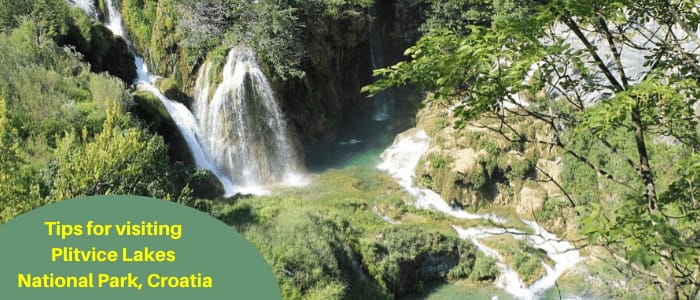

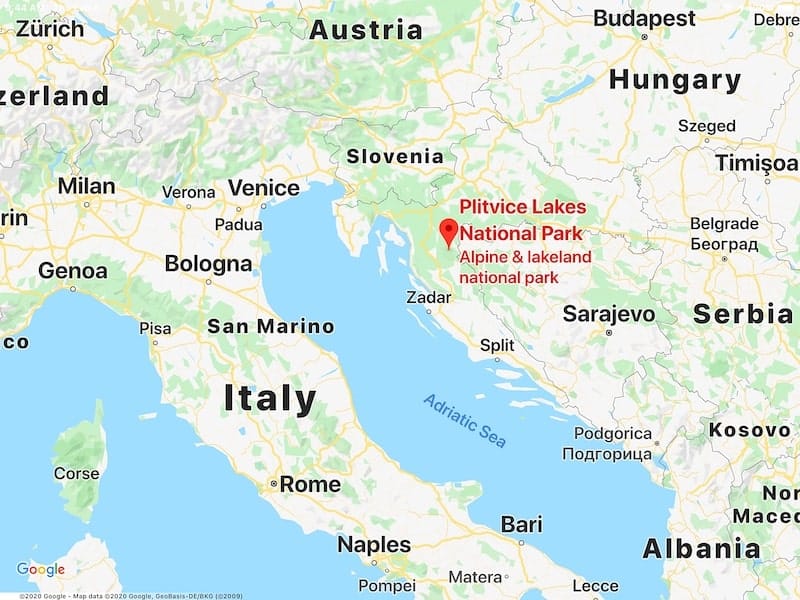

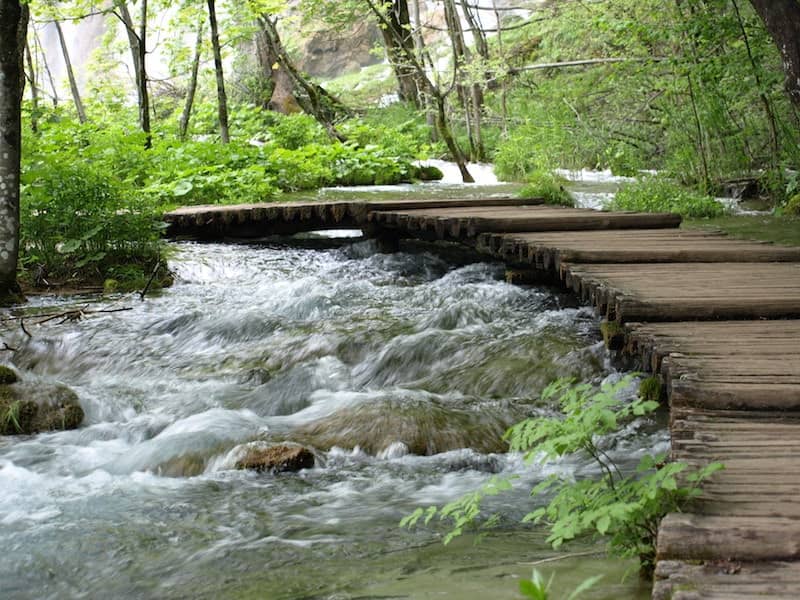
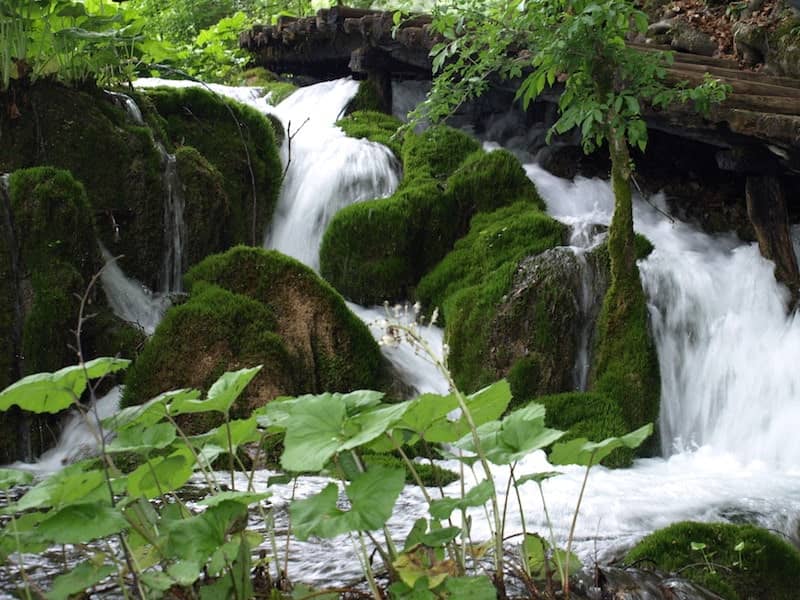

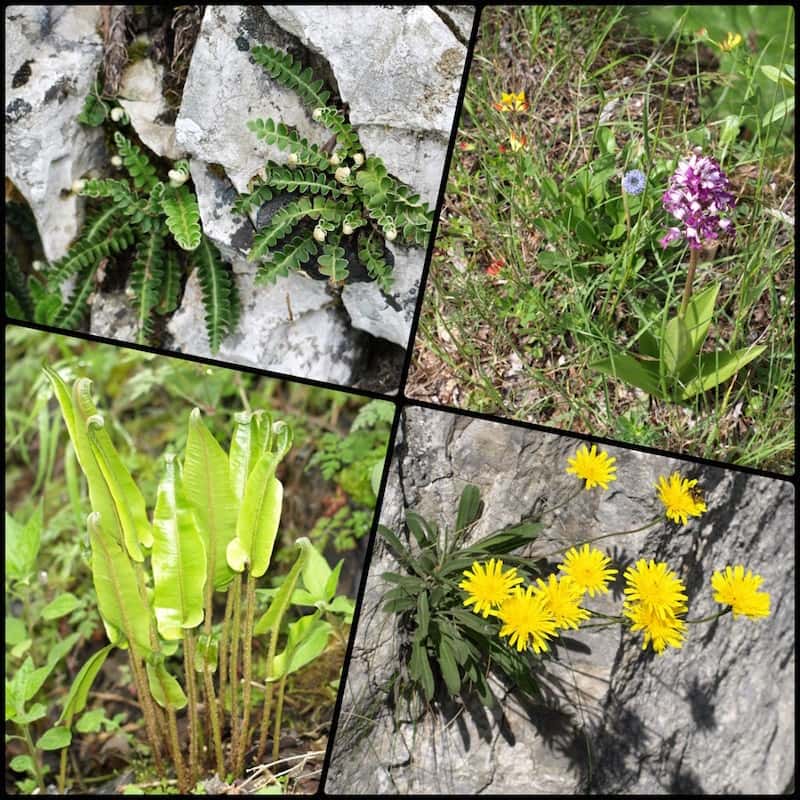
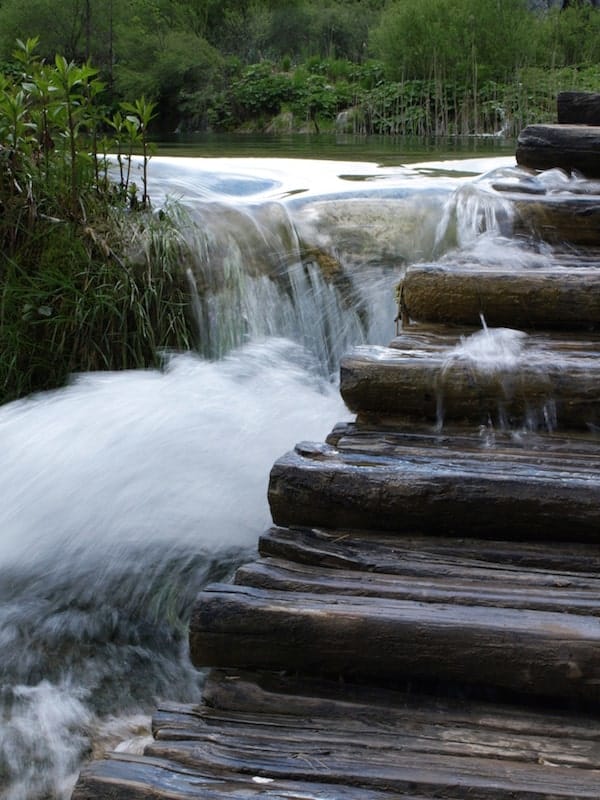
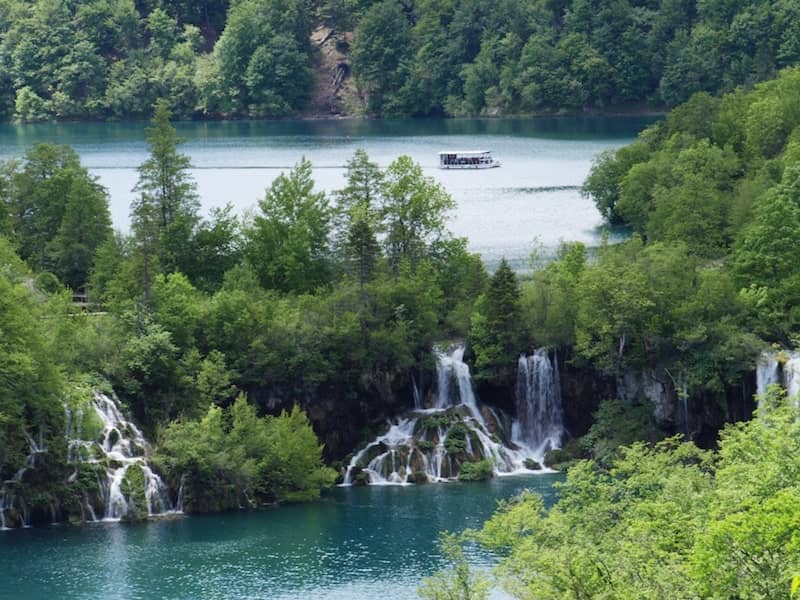


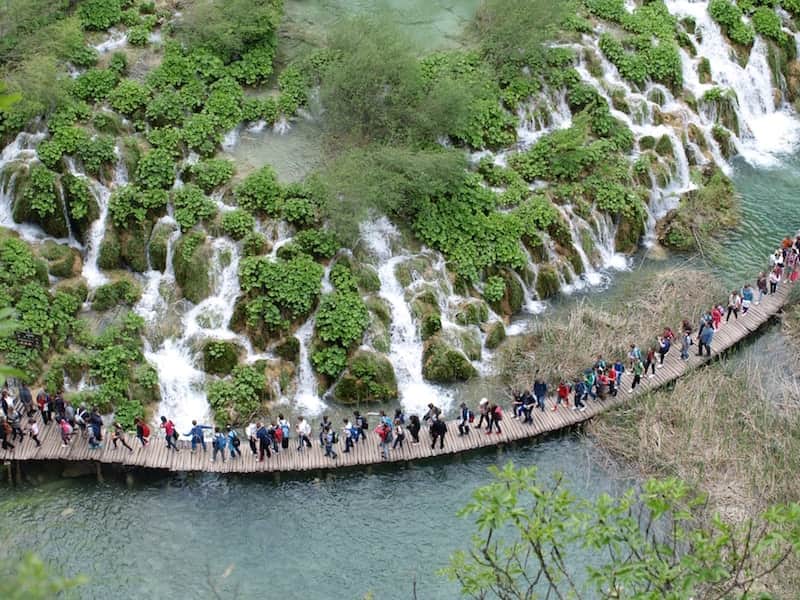
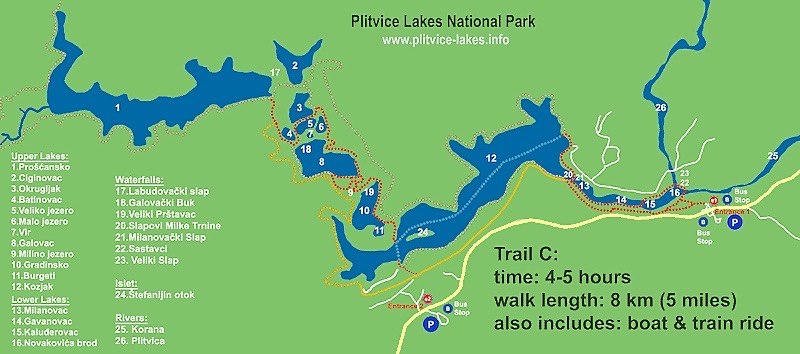
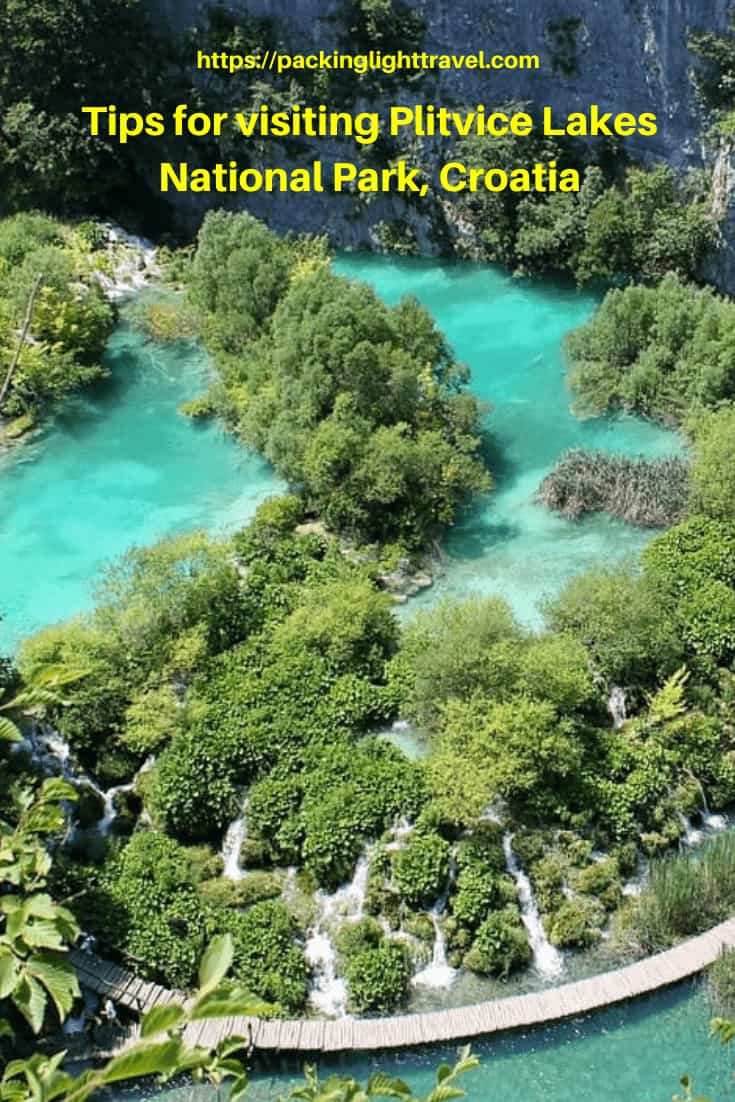




Absolutely lovely! I loved the park, and visiting in Autumn it was so quiet too. http://lovepuffin.me/plitvice-lakes/
Happy travels! x
Hayley recently posted…Varkala: All you need to know
thanks for the detailed report! Because of the crowd, it’s important to have strategic planning. We will arrive the park in the midday from Zadar at the end of June, which means the time when the park is very crowded. What should we visit and see first to avoid most of the crowd? then late afternoon when people start to leave, what should we visit? the next morning, we have about 3 hours before we drive to Lake Bled in which we will have relatively alone time.
would like to hear your suggestion. Thanks!
there are 9 programs by the park, other than that, there are other things to see. Did you do that?
when you said “we alternated between being “up close and personal” with the pristine water, and climbing to higher trails and vantage points for the spectacular views high above the rock face.” Is this within the 9 programs by the park? it’s mostly on the upper lake?
I’m wondering how we could strategically spend our time there to avoid the crowd, but also not repeat, but see more things there.
Hello Camille. Thanks for dropping by. I hope you thoroughly enjoy your visit to Plitvice Lakes in June. I think with some planning, you’ll be able to see a lot of the park. On your first afternoon, you’ll arrive in the middle of the day when it’s busy, but the crowds will likely start to thin out mid-afternoon. I recall the park was open quite late, so if you pack some snacks, you could stay until closing time. I think the bus tours tend to have their folks on the more moderate trails, so you could start with a more challenging hike and return to the easier trails after the buses leave. Or, hike them on your second day, immediately after the park opens. While I loved the boardwalks beside the lakes and streams, it was less busy on the higher trails. Plus the views from above were fantastic. (Yes, these are “within the 9 programs” mentioned in your comment.) I suggest you read a few recommendations from other travellers (e.g., https://www.kimkim.com/c/unique-ways-to-experience-plitvice-lakes-national-park). Just Google something like “best trails to see Plitvice Lakes National Park.” You’ll plan which trails to hike, but I think it’s important to be flexible to avoid crowds (e.g., switching trails, quickly passing bus tour groups, or going in the opposite direction). I hope this helps. Enjoy your trip.
Anne Betts recently posted…Travel with tablet towels
I think Plitvice Lakes is a slice of heaven on earth. It was cool and drizzly the day we were there in May 2017 and it simply didn’t matter. It was stunning. We only had half a day so we did the four hour walk. It wasn’t a busy tourist day so we felt like we had the place to ourselves at some points. We always recommend this to people who are thinking of visiting Croatia.